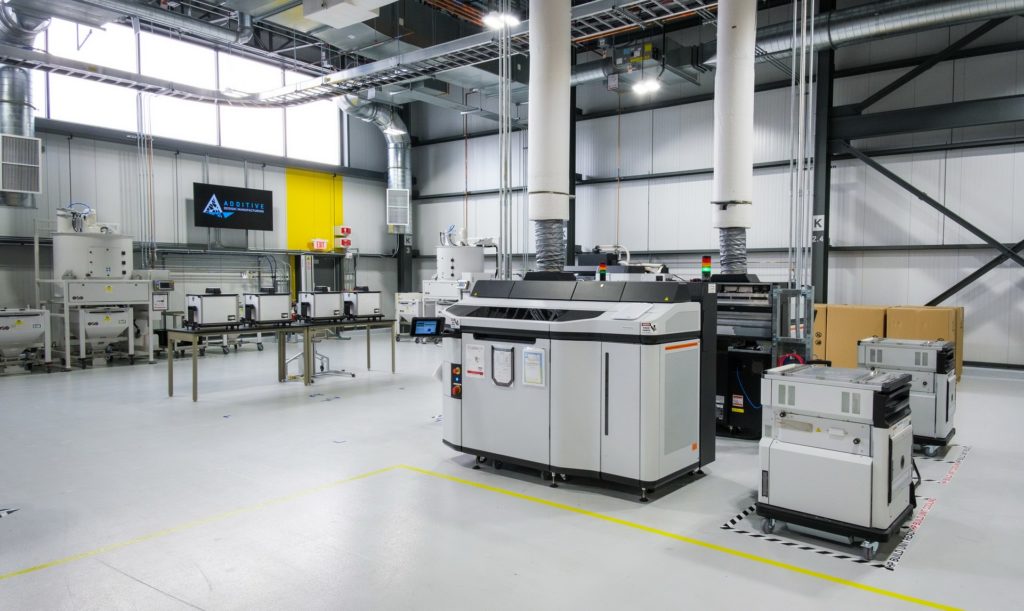The Cadillac CELESTIQ is the wildest car name ever—like the name of a futuristic rocket vehicle from Spy Kids. It’s like a name for a space ship or a fever dream robot warrior. In all actuality, it will be a hand-built electrical vehicle (EV) from GM´s Cadillac unit and feature over 100 3D printed parts.
GM will invest $81 million to manufacture the car at its Global Technical Center. The vehicle will be built on GM’s Ultium Platform, which consists of a common architecture, including batteries, drive units, motors and electronics all underpinning Cadillac’s next generation of EV cars. The firm hopes to reap scale rewards from common components and manufacturing processes for EV assembly across different manufacturing sites.

“As Cadillac’s future flagship sedan, CELESTIQ signifies a new, resurgent era for the brand. Each one will be hand-built by an amazing team of craftspeople on our historic Technical Center campus, and today’s investment announcement emphasizes our commitment to delivering a world-class Cadillac with nothing but the best in craftsmanship, design, engineering and technology,” said Mark Reuss, president of General Motors.
The CELESTIQ will feature over a 100 3D printed parts, both metal and polymer, including structural and cosmetic components. The firm will also deploy 3D printing for jigs, fixtures, and other production tooling. This will help GM’s Additive Industrialization Center scale its 3D printing prowess. Previously, GM’s Blackwing CT4-V and CT5-V cars featured one shifter piece, two ducting components, and a harness part, all made with 3D printing. The project also comes off the heels of a recent emergency usage of additive for 3D printed spoiler parts on GM SUVs.
“This investment is a great example of our commitment to GM’s EV transformation as we apply our manufacturing expertise to a one-of-a-kind, ultra-luxury vehicle for the Cadillac brand. The advanced manufacturing technology and tools we are utilizing on CELESTIQ will help our team deliver the highest quality vehicles to our customers,” said Gerald Johnson, executive vice president of Global Manufacturing and Sustainability at GM.
We’re seeing a bit of a protracted 3D printing race between the car companies. For a long time, it seemed like BMW, Mercedes, and Volkswagen had a commanding lead over other businesses. Stellantis also has parts in production already. Generally, the US based firms were very far behind.
The European companies are also known to produce many 3D printed jig and fixture components worldwide. BMW revealed that it has produced over $1 million components using 3D printing. That company also used a 3D printed roof bracket for the i8 and had a Mini mass customization program that extensively used 3D printing. Volkswagen has also deployed the technology widely across the firm.
Mercedes probably has the most advanced capabilities in metal printing, due to its extensive Formula 1 involvement. Meanwhile, BWM´s polymer prowess is the most advanced, given the long time involvement that firm has had with powder bed and other technologies. Volkswagen, meanwhile, was ramping up investments in multiple brands to a hereto unseen level.
Now, GM is putting together a very public project managing to best them. Overall, 100 3D printed parts in a car is a significant public commitment. Additionally, relying on several additive technologies at once is complex. At the same time, it is also very advantageous in terms of understanding the technology. But, in terms of volume on existing passenger vehicles, the company has been bested already. I believe that some European automakers may actually have more parts in circulation.
I advocate that companies implement 3D printing in walled-off, manageable projects to see how the technology works. I’m not sure I’d ever want to commit to using these parts in public like this. If 3D printed structural components are bearing loads continuously, they may be problematic. Given the high variability in part structure, depending on toolpaths and placement in the printer, parts can respond to stresses remarkably differently over time.
Currently, we’re in a time of electrification. This means that the time is ripe to change towards 3D printing as new platforms are made and put into production. Especially with tooling, we know that additive is cheaper and more versatile that competing technologies. On production parts, the technology is still too expensive on the whole. However, this can be fixed if car companies put enough volume behind 3D printed parts and couple this with smart automation.
On the whole, this is a very exciting project. We know from videos that GM’s Additive Industrialization Center has EOS, HP, and Stratasys machines, as well as those from Formlabs. I can’t wait to see how other firms outdo GM with similar claims, projects, and showcases. I’d love for 3D printing to drive competition and showmanship by large car companies.
Subscribe to Our Email Newsletter
Stay up-to-date on all the latest news from the 3D printing industry and receive information and offers from third party vendors.
You May Also Like
Gorilla Sports GE’s First 3D Printed Titanium Cast
How do you help a gorilla with a broken arm? Sounds like the start of a bad joke a zookeeper might tell, but it’s an actual dilemma recently faced by...
Nylon 3D Printed Parts Made More Functional with Coatings & Colors
Parts 3D printed from polyamide (PA, Nylon) 12 using powder bed fusion (PBF) are a mainstay in the additive manufacturing (AM) industry. While post-finishing processes have improved the porosity of...
$25M to Back Sintavia’s Largest Expansion of Metal 3D Printing Capacity Since 2019
Sintavia, the digital manufacturing company specializing in mission-critical parts for strategic sectors, announced a $25 million investment to increase its production capacity, the largest expansion to its operations since 2019....
Velo3D Initiates Public Offering in a Bid to Strengthen Financial Foundations and Drive Future Growth
Velo3D (NYSE: VLD) has been among a number of publicly traded 3D printing firms that have attempted to weather the current macroeconomic climate. After posting a challenging financial report for 2023,...





























